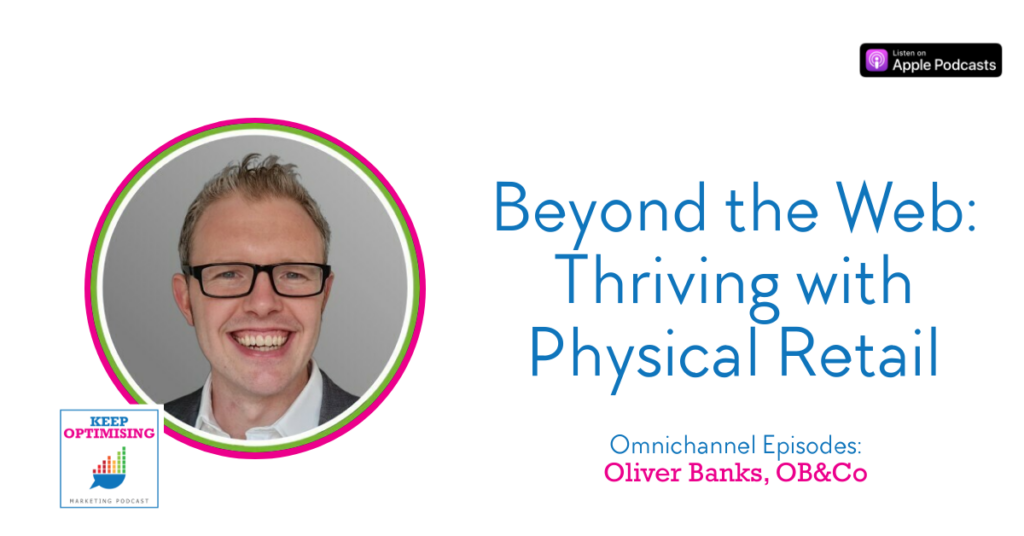Omnichannel: Harnessing Physical Retail for eCommerce Success with Oliver Banks, OB&Co (episode 202)
by April Buencamino-dyOliver Banks is the founder of retail consultancy OB&Co, host of The Retail Transformation Show podcast, and Author of the brand new book “Driving Retail Transformation: How to Navigate Disruption and Change” already described by Boots UK’s Chief Digital officer as “Essential reading for any retail leader” AND (like me) one of LinkedIn’s top Retail Voices–yeah, the blue badge.

Listen now for free:
Dive in:
[05:29] Omnichannel strategy boosts sales and customer engagement.
[08:35] Pop ups take a lot of effort.
[10:58] Importance of store network for customer engagement.
[13:19] Omnichannel strategy: basics, pricing, click and collect.
[17:09] Leveraging physical stores for brand engagement.
[19:08] Exploring the “endless aisle” concept.
[20:43] Insider Tips from Oliver!
Synergy Between Online and Physical Retail
There is a direct relationship between online and physical retail channels. For example, opening a physical store in a new area leads to an increase in online sales within the same geographic region. This shows that physical stores can serve as powerful marketing tools that heighten brand awareness. They can also engage customers even if they primarily shop online. The presence of a store adds a tangible element to the shopping experience. This reinforces customer trust and brand loyalty. Brands should view physical stores not just as sales points but as crucial components of their brand strategy. Physical stores are capable of boosting online engagement and expanding their customer base.
Flexibility in Physical Retail Formats
Different physical retail formats serve unique strategic purposes. For instance, flagship stores can be seen as destination spots offering unique brand experiences. Pop-ups are useful for short-term, high-impact marketing campaigns aimed at generating buzz and testing new markets or products. This flexibility in choosing the right format allows brands to tailor their physical presence. Things to consider are specific business goals, market demands, and customer preferences. Knowing the role and potential impact of each store format can lead to more effective and adaptive retail strategies.
The Importance of a Seamless Omnichannel Experience
An important takeaway is the need for consistency and seamlessness across retail channels. Align promotions, pricing, and customer service between online and physical stores. Doing this can prevent customer dissatisfaction and confusion. Additionally, services like click-and-collect must be efficiently managed. Make sure they add value to the customer’s experience. There’s also the need for easy product returns across channels. This can enhance customer satisfaction and loyalty. Operational details are vital for maintaining a seamless brand experience across all platforms. They can help improve customer retention and enhance the effectiveness of omnichannel strategies.
Listen to hear Oliver’s Insider Tips on omnichannel!
Interview links
Sponsored by…

Shopify recently turned the tables on me, and took me from interviewer to interviewee.
Knowing, as they do, that the most successful retailers today are those that bridge the gap between online and offline and make it a seamless experience, Shopify wanted my thoughts on how to achieve truly connected commerce, particularly in the key areas of local selling, omnichannel selling and cross border selling.
You can read my thoughts, along with other commerce experts from Germany, France, Spain and Italy by downloading the report.




